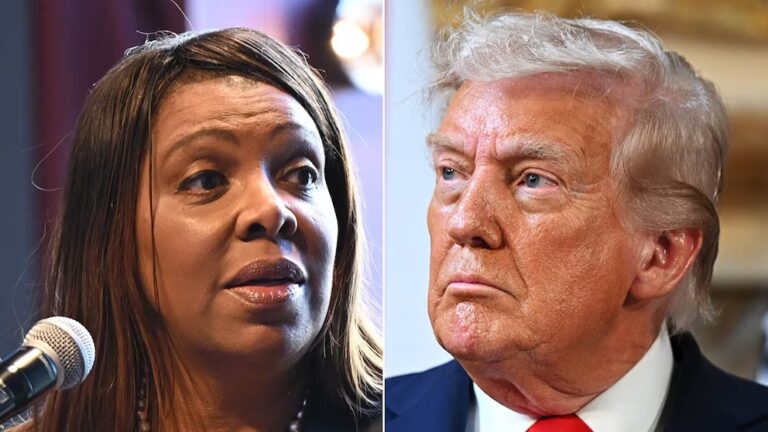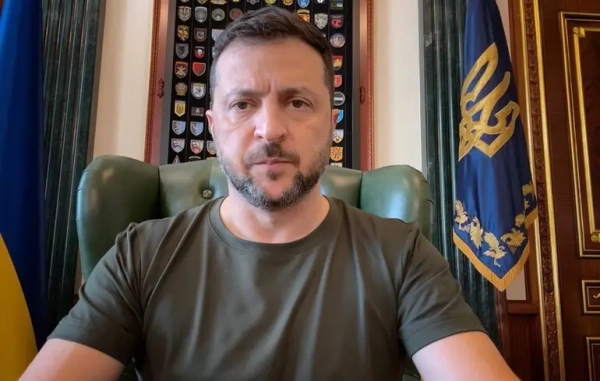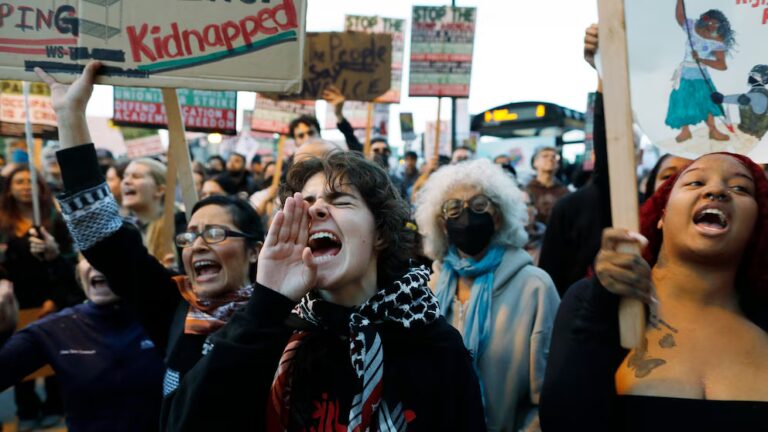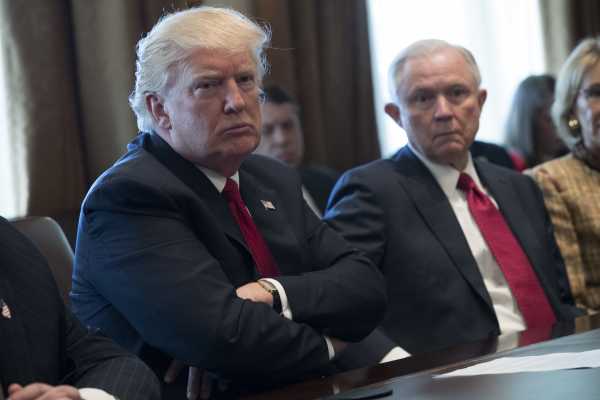
Attorney General Jeff Sessions just sent out a memo asking federal prosecutors to pursue the death penalty in drug trafficking cases — implementing President Donald Trump’s plan from earlier this week to ramp up “tough on crime” punishments in response to the opioid epidemic.
Here’s the memo, which in part asks prosecutors to pursue capital punishment in cases “dealing in extremely large quantities of drugs”:
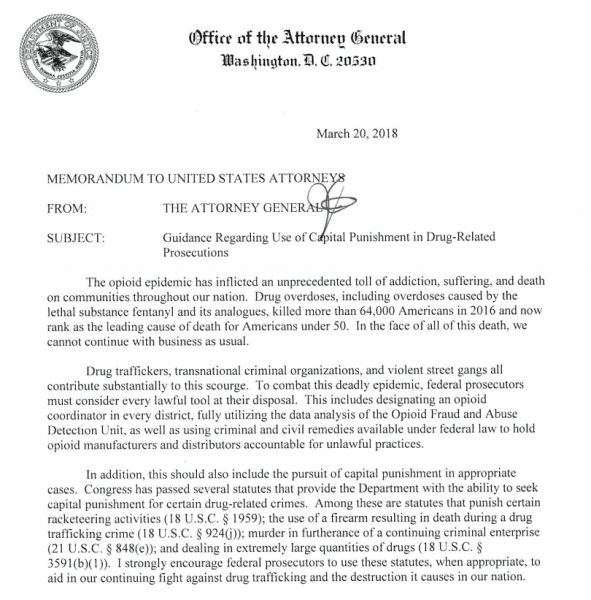

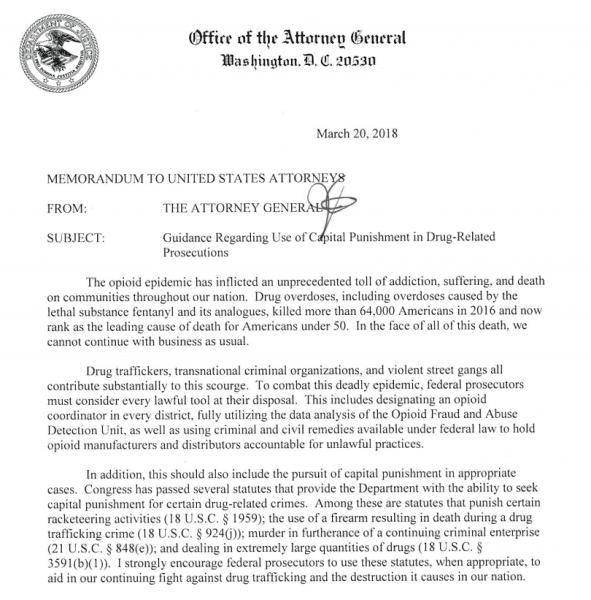
Sessions can ask federal prosecutors to do this under a law signed by President Bill Clinton in 1994, when fears of crack cocaine and crime led to increasingly punitive criminal justice policies.
The 1994 provision, however, has never been used to execute drug traffickers. In fact, the federal government has not executed anyone in 15 years.
Trump and Sessions seem intent on changing that. Trump made the case at a rally earlier this month: “If you shoot one person, they give you life, they give you the death penalty. These [drug traffickers] can kill 2,000, 3,000 people and nothing happens to them.”
The White House has also asked Congress to reduce the threshold required to impose mandatory minimum sentences for trafficking illicit fentanyl and other opioids “that are lethal in trace amounts.”
But the US has tried this increasingly punitive approach over the years — and it simply has not worked. As Mark Kleiman, a drug policy expert at the Marron Institute at New York University, previously told me, “We did the experiment. In 1980, we had about 15,000 people behind bars for drug dealing. And now we have about 450,000 people behind bars for drug dealing. And the prices of all major drugs are down dramatically. So if the question is do longer sentences lead to a higher drug price and therefore less drug consumption, the answer is no.”
One of the best studies backing this is a 2014 review of the research by Peter Reuter at the University of Maryland and Harold Pollack at the University of Chicago. They found that while simply prohibiting drugs to some extent does raise their prices, there’s no good evidence that tougher punishments or harsher supply elimination efforts do a better job of driving down access to drugs and substance misuse than lighter penalties. So increasing the severity of the punishment doesn’t do much, if anything, to slow the flow of drugs.
In fact, harsher punishments can be counterproductive — by punishing people who need treatment, not incarceration. Although “tough on crime” efforts are often framed as going after drug dealers and traffickers, the line between who is a dealer or trafficker versus a user can be blurry. A 2017 Bureau of Justice Statistics report, for instance, found that “nearly a third of drug offenders (30 percent of state prisoners and 29 percent of jail inmates) said they committed the offense to get drugs or money for drugs.”
The failure of the punitive policies is one reason why drug policy experts have emphasized other approaches to resolving the opioid epidemic — particularly more treatment (including medications like methadone and buprenorphine), more harm reduction (such as better access to the opioid overdose antidote naloxone), fewer painkiller prescriptions (while ensuring the drugs are available to those who really need them), and policies that can help address the root cause of addiction (like mental health issues and socioeconomic despair).
But Trump’s plan and his speech unveiling it on Monday seem focused on the criminal justice side of things — the opposite of what experts have recommended. And now his administration is implementing that plan.
For more on Trump’s opioid epidemic plan, read Vox’s explainer.
Sourse: vox.com
